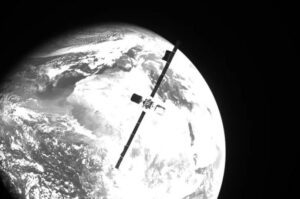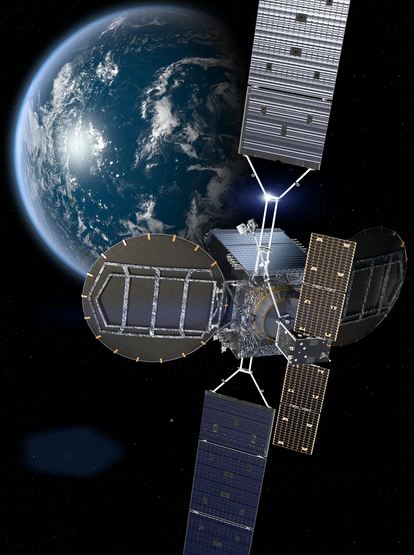A satellite’s mission is never over. Old satellites can continue their work thanks to robotic spacecraft such as MEV-2 (the Mission Extension Vehicle-2). Will this industry of life-extension services for dying or errant satellites work?
According to Northrop Grumman, MEV-2 can be extremely useful in prolonging old satellites’ missions deep in orbit by up to five more years.Â
Here is what you need to know.
MEV-2’s Mission to Save Old Satellites

Northrop Grumman launched MEV-2 last year from French Guiana in South America. The robotic spacecraft needed six months to raise its orbit to get to Intelsat’s 17-years-old satellite.
That satellite is 22,000 miles from Earth, and it was running out of fuel and slowly dying.Â
MEV-2 proved to be a real success thanks to its manoeuvre of reviving Intelsat. The process started on March 12 and included a month-long docking with the satellite.Â
The news was confirmed today (April 13) by Northrop Grumman.Â
Joe Anderson, the vice president of business development at SpaceLogistics, stated:
[…] was every bit as exciting and successful as the docking of MEV-1.”
Intelsat has a new chance at life, continuing its beaming broadband communications to Europe, Africa, South America, and the Middle East.
More MEV-missions to Expect
Currently, MEV-2 is at the back of Intelsat’s IS-10-02 satellite, generating navigating control and renewed power.
Both spacecraft will run as a mixed “stack” for five years. MEV-2 will undock after that period.
It will start right away searching for another old and dying satellite.
Northrop Grumman’s upcoming plans include developing an upgraded satellite servicing system dubbed MRV (Mission Robotic Vehicle). The spacecraft’s mission will include finding ageing satellites and installing orbital “first-aid kits” to them.Â
The kits will offer enough power and propulsion to support the satellites.Â
MRV will be able to transport up to six pods. The first mission will take place by early 2024.












Leave a Reply